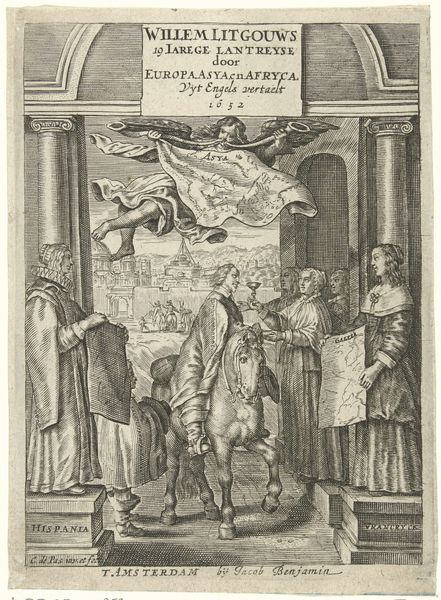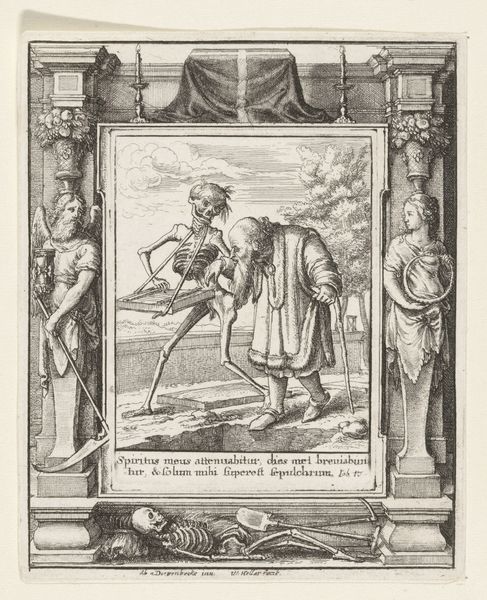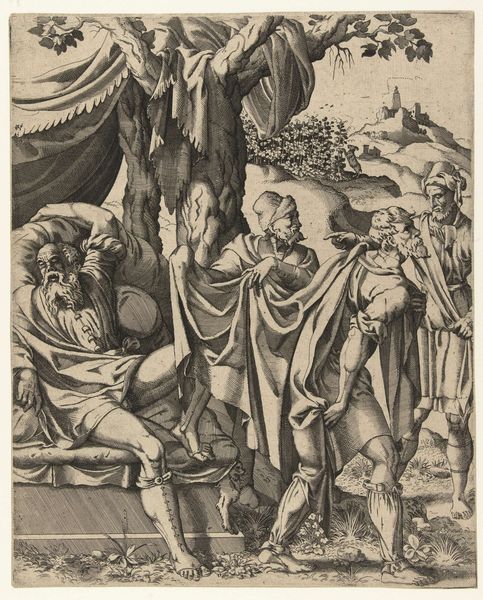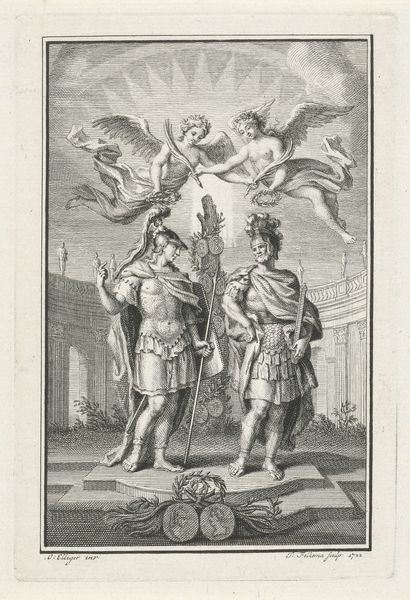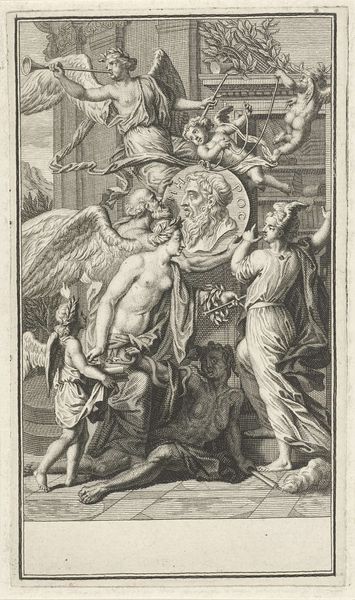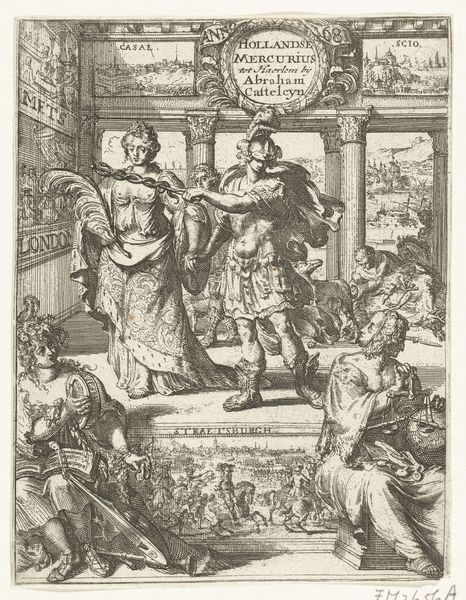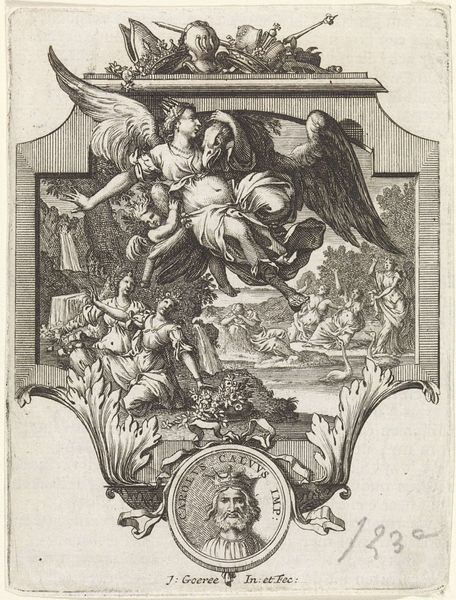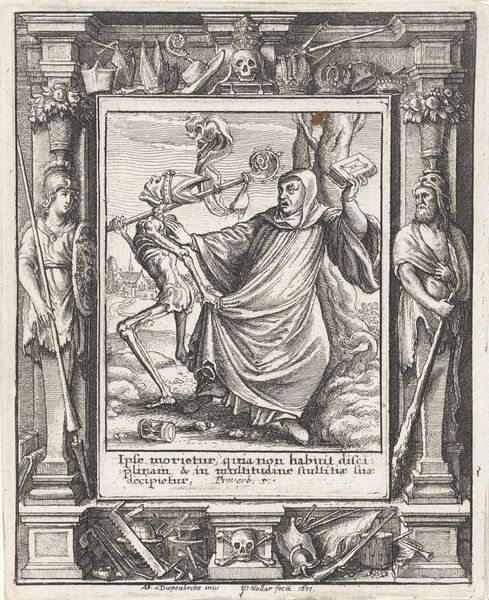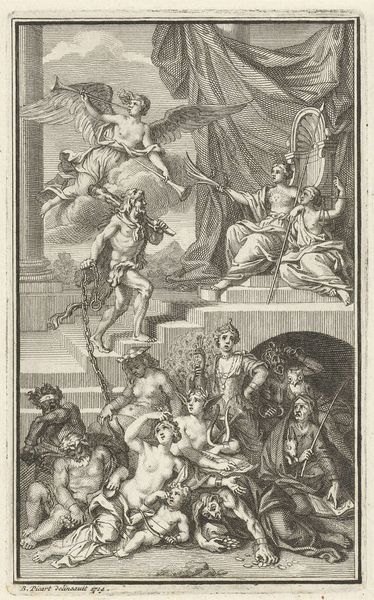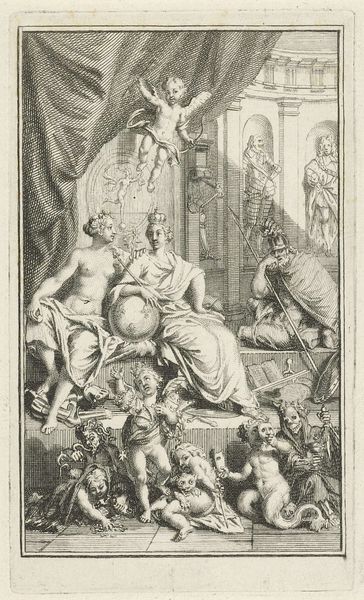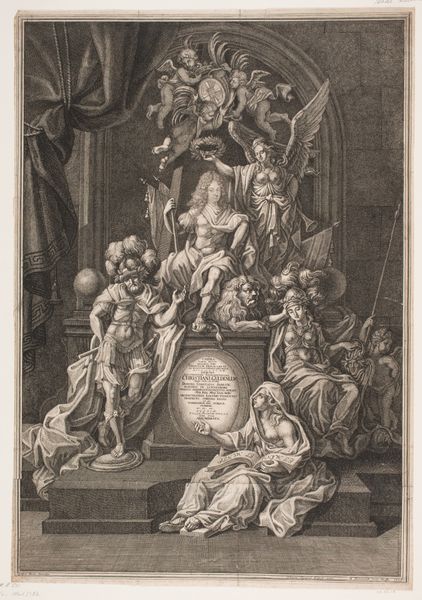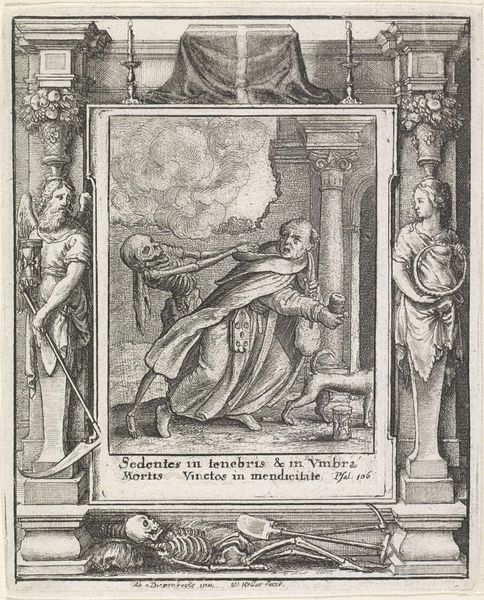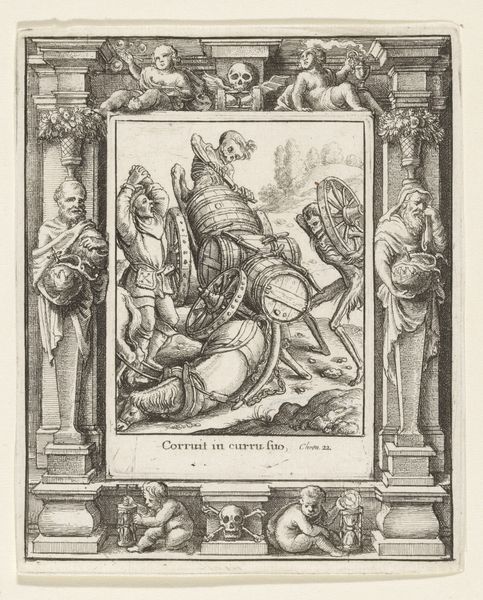
print, engraving
#
allegory
#
baroque
# print
#
old engraving style
#
figuration
#
line
#
history-painting
#
engraving
Dimensions: height 145 mm, width 83 mm
Copyright: Rijks Museum: Open Domain
Curator: Let's take a look at this engraving, "Pyrrhus toont Gaius Fabricius Luscinus een olifant," from 1720 by Jacob Folkema, residing here at the Rijksmuseum. Editor: My first thought? Intrigue masked by very controlled lines. It feels classical but the elephant in the background… well, that throws a wonderful wrench in the gears! Curator: Absolutely, the elephant does disrupt the expected scene. This engraving illustrates a moment from Roman history, a scene of diplomatic... persuasion, let's call it. Consider the printmaking process of the era; the line work emphasizes control and the capacity to disseminate such narratives to a wider audience. Editor: Control indeed! It’s almost… chilly. Is that the intent? A lesson etched into copper, then pressed into paper for posterity? The rigid poses, those perfectly placed coins... It's all so deliberate, it feels like morality staged as theater. Curator: Precisely. Note how the figures are placed on what appears to be a stage. Below we see a plinth with coins and inscription – clearly a commentary about tempting Gaius Fabricius Luscinus with wealth, testing his incorruptibility with material goods and, yes, exotic animals—Pyrrhus's elephants were quite the flex. Editor: The very literal temptation. I wonder if Folkema knew how subversive his own meticulous process was, mimicking power with lines? The elephant almost feels like a dream; a foreign disruption pushing against the cool rationalism of the scene. Did this piece resonate then? Did it fuel any questions about wealth versus honor? Curator: Definitely. Engravings like this, produced and distributed relatively widely, reinforced social and political ideals. The artistry underscores the moral of the story – virtue and the state are one. The dissemination of prints became, in its own way, an instrument of soft power. Editor: Intriguing to see how power presents itself. So, we began with the impression of a meticulously crafted scene that ends up being a fascinating glimpse into cultural production, the printing press and power dynamics! Curator: Precisely! It illustrates the fascinating entanglement of production, technique, and the propagation of values.
Comments
No comments
Be the first to comment and join the conversation on the ultimate creative platform.
